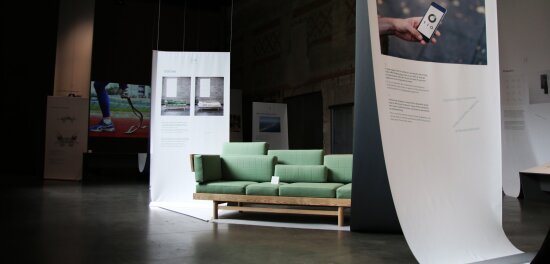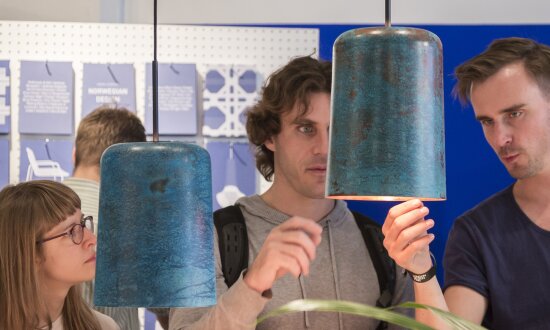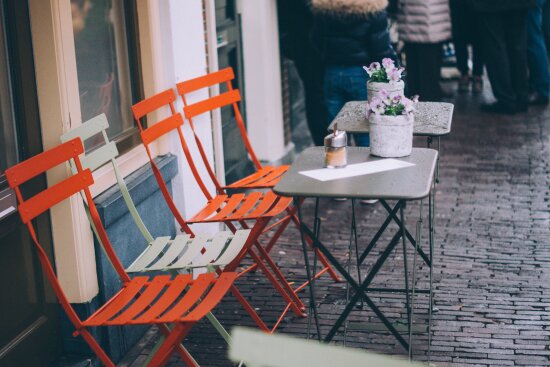Together with Innovation Norway and the Ministry of Foreign Affairs, DOGA has prepared a report that investigates how other countries perceive Norway and Norwegian business and industry. The results show that DOGA’s efforts to strengthen the fields of design and architecture in Norway and internationally are both appropriate and effective.
“We see changes taking place in how the rest of the world perceives Norwegian design and architecture. Interest in Norwegian industrial design and fashion is growing considerably. We have world-class service designers that have come to the attention of the world of architectural and planning competence,” says Trude Gomnæs Ugelstad, CEO of DOGA.
Strong in quality, weak in marketing
The report establishes that the quality of products and services produced in Norway is high, but that we are not particularly good at promoting ourselves externally. There is little knowledge about the Norwegian creative industries outside of Northern Europe. This comes as no surprise to Ugelstad.
“We’ve been working strategically to profile Norwegian design internationally for years. Our presence at such major events as the furniture fair in Milan has paid off. Norwegian industrial design is more popular than ever,” she says.
DOGA is also the host for the Samarbeidsrådet for møbel og interiør and works together with the Norwegian Fashion Hub and Norwegian Rooms groups. All three work to strengthen Norway’s creative industries and Norwegian design as a brand internationally.
“But this is about more than just the design of ‘things’. Other disciplines, such as service and system design, also play a decisive role in the restructuring of Norway. Here, too, we see that the Norwegian creative industries rank among the upper echelon, without the world necessarily being aware of this.
Good news for Norwegian architecture and planning
The Director of Architecture at DOGA, Tor Inge Hjemdal, believes that the results of the study are very good news for Norwegian architecture and planning.
“We know that we are good at architecture and developing good plans and cities. This is reflected in the significant interest we are experiencing in Norwegian architecture internationally and growing number of awards presented to Norwegian architects,” says Hjemdal.
He believes we have strong talent and expertise, but at the same time agrees with the findings that we are weak in communication, marketing and commercialisation.
“This is something DOGA can improve and is working to improve. We are working on a strategy and action plan with a focus on broad sector involvement and collaboration across the entire policy implementation system. DOGA wants to help create new opportunities for Norwegian architecture internationally by working on communication, knowledge development and marketing,” he adds.
To succeed, DOGA is working together closely with the Ministry of Foreign Affairs, Innovation Norway and the Ministry of Trade, Industry and Fisheries. But efforts on the system level are not enough.
“It is important to clarify that our international work depends on Norwegian architects actually wanting to profile their work abroad. Now that we have made clear what the potential is, we hope they will want to help achieve it.”
Similar perception of Norwegian creative industries abroad
- The Norwegian creative industries are best known in Scandinavia and Northern Europe. The further away from Norway, the less known we are.
- The Norwegian creative industries are considered a distinct element of the Scandinavian design tradition, but we are far less known than the Swedes and Danes. All the same, there is a clear impression that the Norwegian creative industries are on the up and up.
- All of the Norwegian creative industries are perceived as having the following characteristics: natural, genuine, simple, pure and earthy colours. The creative design language is considered to reflect Norwegian nature and perhaps the climate in particular.
- Functional design is considered typically Norwegian. There is ‘nothing’ that does not have a distinct meaning. The design is timeless and can withstand the test of time. Norwegian designers are not preoccupied with the latest trends.
- Sustainable production is also perceived to be typically Norwegian. There is increasing relevance in all markets, also those that are least developed.
- Norwegian quality is considered in a class of its own, but with a high price tag. Outside of Scandinavia, our target group is therefore the well-to-do, those who are interested in ‘smart casual’ and mostly in the age bracket of 30-50 years.
- The Norwegian creative industries are advised to cultivate their distinct characteristics because it is ‘the distinctly Norwegian’ characteristics that are our strongest selling point. Without this distinctiveness, we would only be one of many when it comes to the production of clothing, furniture and buildings. A small country with few specialists is doomed to lose such a competition.
- The Norwegian creative industries have little visibility outside of Scandinavia and are also perceived as prioritising the expanded home market. If we aim to grow in other parts of the world, we will need to step up our marketing activities considerably.



